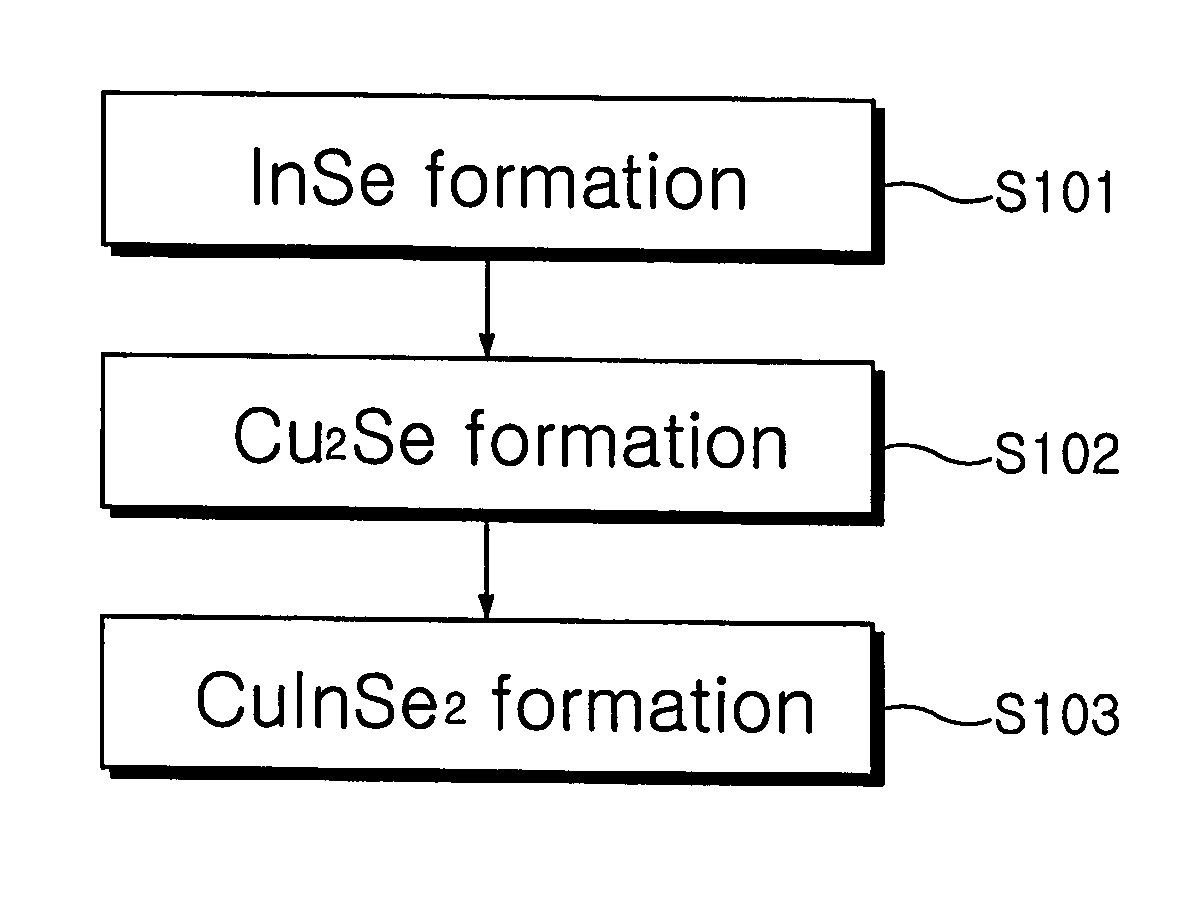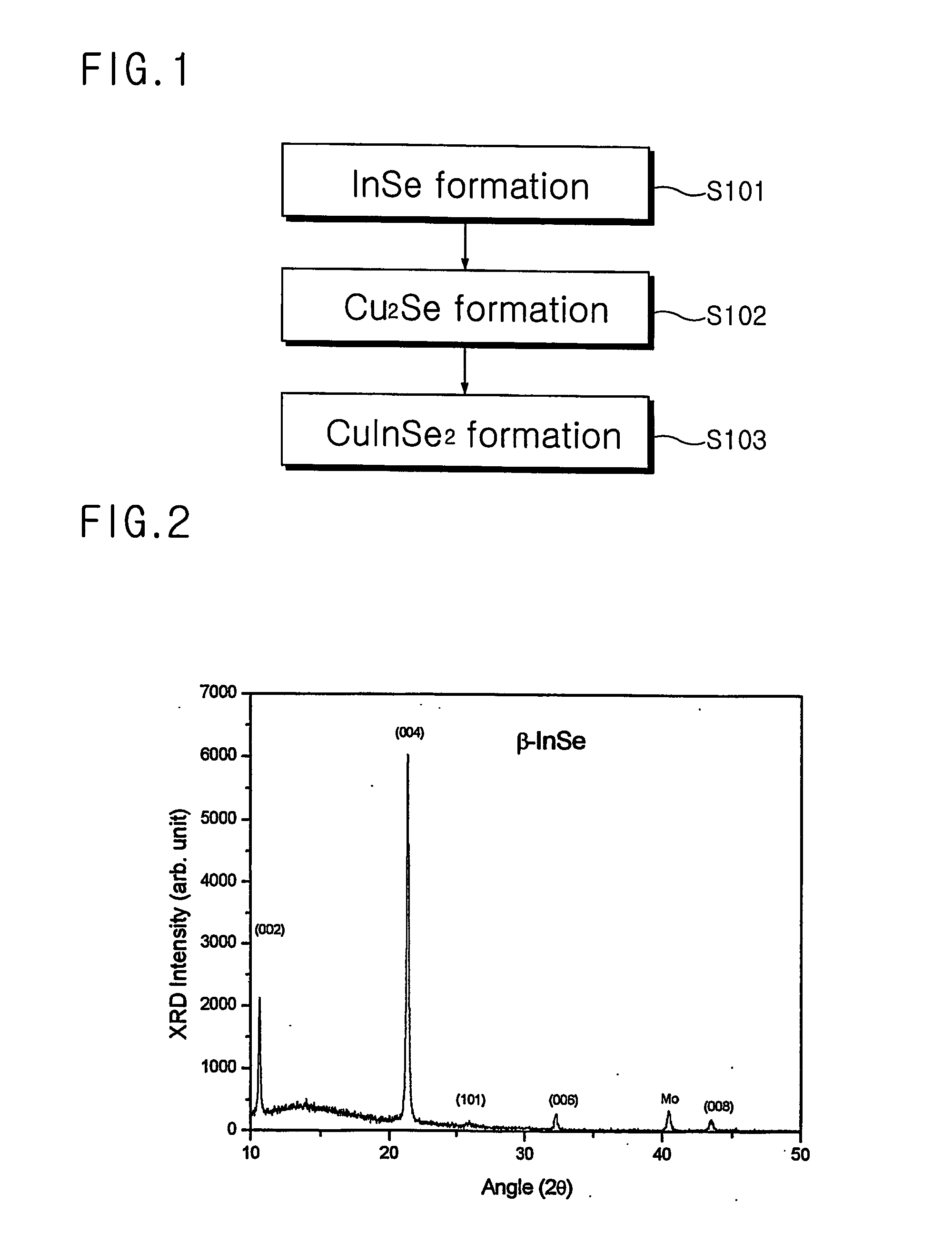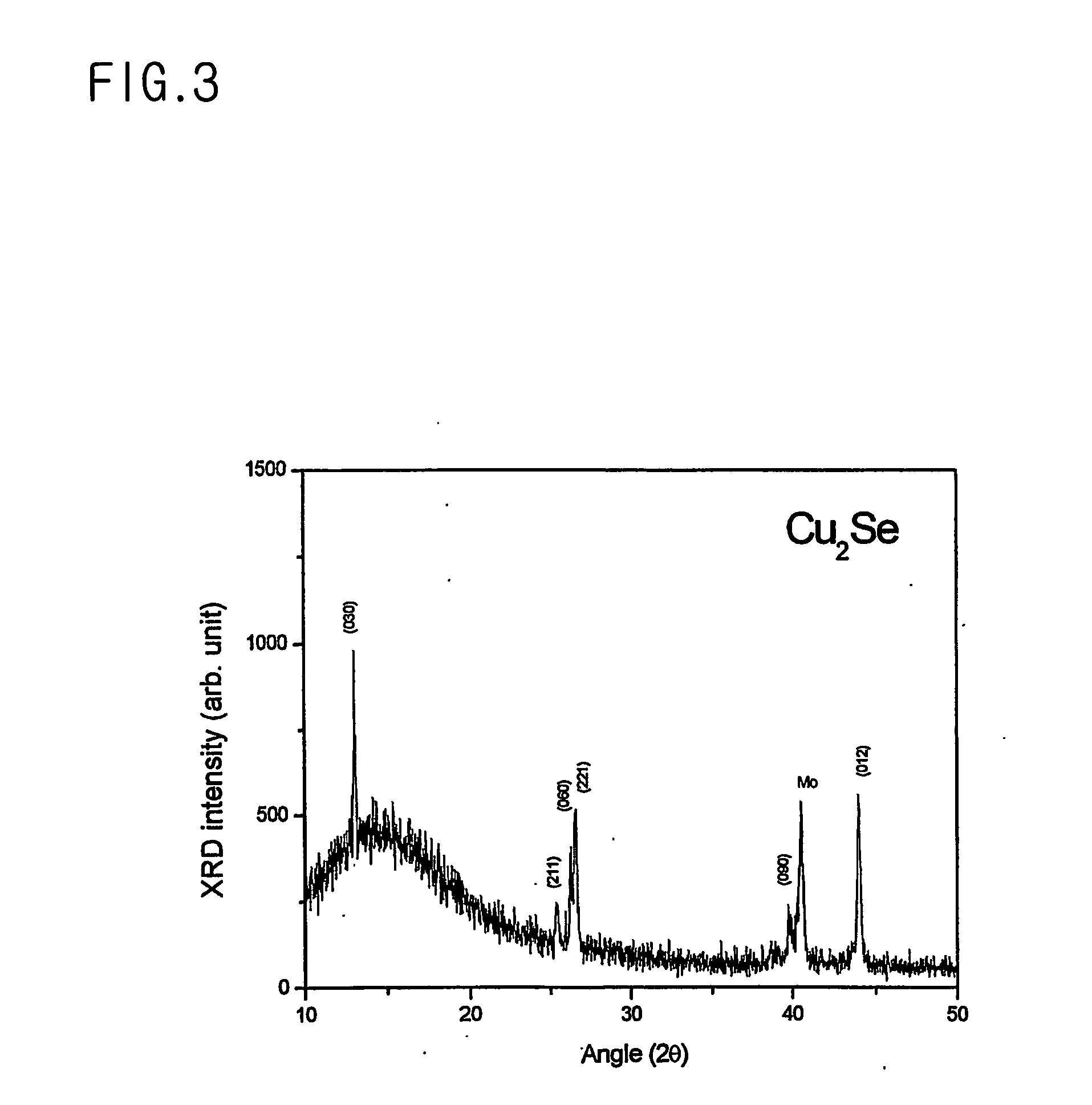Method for manufacturing absorber layers for solar cell
- Summary
- Abstract
- Description
- Claims
- Application Information
AI Technical Summary
Benefits of technology
Problems solved by technology
Method used
Image
Examples
first embodiment
[0024]FIG. 1 schematically illustrates a process flow for production of a CIS thin film in accordance with the present invention;
[0025] As shown in FIG. 1, an InSe thin film is formed on a substrate made of Mo material by MOCVD using [Me2In-(μSeMe)]2, a single precursor including In and Se (step S101). Me represents methyl, and U means that Se is double-bonded to In. As the substrate, a thin and flexible substrate made of the Mo material may be used instead of a conventional glass substrate, and thus various shapes of solar cells may be implemented.
[0026] Next, a Cu2Se thin film is formed on the InSe thin film formed in step S101 by MOCVD using a monovalent Cu precursor (hfac)Cu(DMB) (step S102). The hfac and DMB are abbreviations of hexafluoroacetylacetonate and 3,3-dimethyl-1-butene, respectively.
[0027] Next, a CuInSe2 thin film is formed on the Cu2Se thin film formed in step S102 by MOCVD using [Me2In-(μSeMe)]2, a single precursor including In and Se (step S103). [Me2In-(μSeMe)...
second embodiment
[0032]FIG. 5 shows a process flow schematically illustrating production of a CIGS thin film in accordance with the present invention.
[0033] As shown in FIG. 5, steps S201 through S203 are the same as in the above-mentioned CIS thin film production process. A CuIn1-xGaxSe2 thin film is formed on the CuInSe2 thin film formed in step S203 by MOCVD using [Me2Ga-(μSeMe)]2, a precursor including Ga and Se (step S204). [Me2Ga-(μSeMe)]2 is a precursor material wherein In in [Me2In-(μSeMe)]2 was replaced with Ga.
[0034] In order to analyze physical properties with regard to In and Ga composition ratio of the grown CIGS thin film, 5 samples (A, B, C, D and E) having different composition ratios were prepared by differing a vapor deposition period of time in step S204 so as to adjust the composition ratio of In and Ga. In the CuIn1-xGaxSe2 thin film, a value of x, i.e., the composition ratio of [Ga] / [In+Ga] was examined by X-ray fluorescence spectroscopy thus showing 0, 0.062, 0.19, 0.34 and 0...
PUM
 Login to View More
Login to View More Abstract
Description
Claims
Application Information
 Login to View More
Login to View More - R&D
- Intellectual Property
- Life Sciences
- Materials
- Tech Scout
- Unparalleled Data Quality
- Higher Quality Content
- 60% Fewer Hallucinations
Browse by: Latest US Patents, China's latest patents, Technical Efficacy Thesaurus, Application Domain, Technology Topic, Popular Technical Reports.
© 2025 PatSnap. All rights reserved.Legal|Privacy policy|Modern Slavery Act Transparency Statement|Sitemap|About US| Contact US: help@patsnap.com



